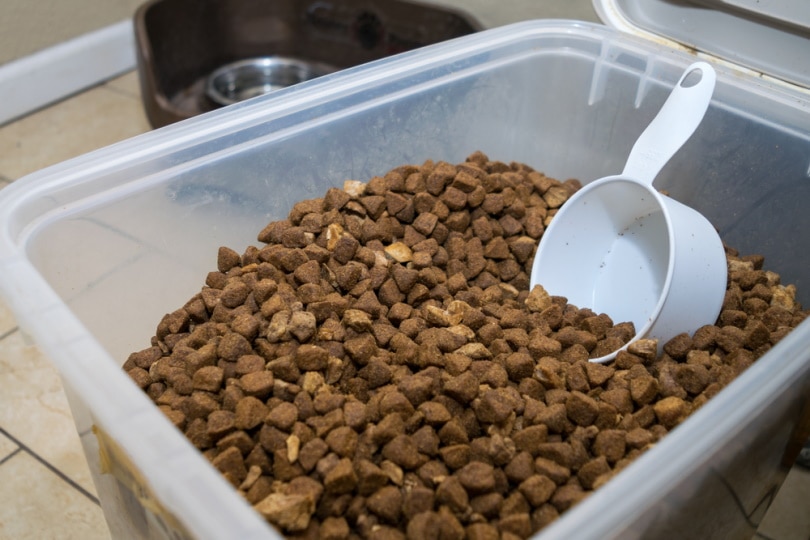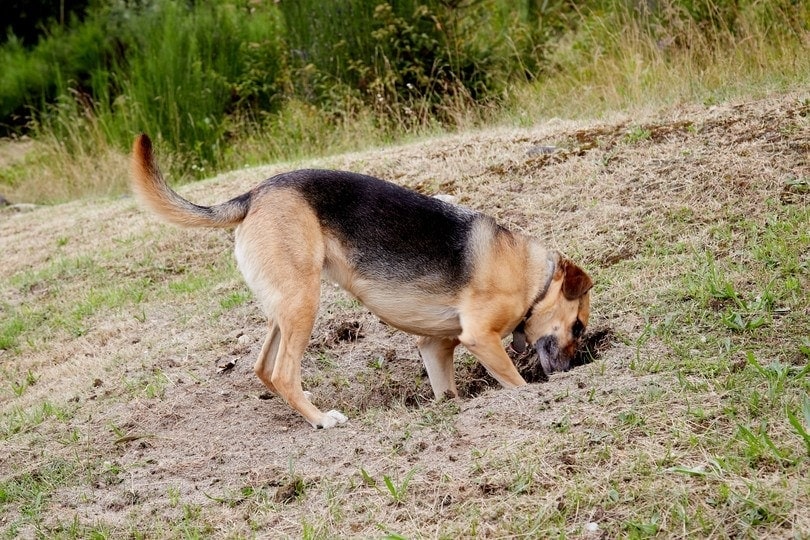5 Common Cane Corso Health Issues You Need To Watch For
Updated on

Every dog parent’s dream is to spend as much time as possible with their furry best friend. This can weigh heavily on a person’s decision to adopt a particular breed, as unfortunately, not all dogs are created equal when it comes to health issues. Genetics play a major role in this, though a healthy diet, plenty of exercise, and regular checkups with the vet are not to be overlooked. Here, we go over the common health issues of the Cane Corso, a magnificent breed that has an intimidating appearance but also shows indelible loyalty to their owner.
The 5 Common Cane Corso Health Issues
1. Bloat and Gastric Dilation Volvulus
Cani Corsi are prone to bloat due to their deep chest, but this condition can affect any breed. In severe cases of bloat, called gastric dilatation and volvulus (GDV), the dog’s stomach twists and fills with gas. This is an extremely serious and painful condition. Without medical attention, the dog can die in less than a few hours. You must immediately take your dog to the nearest veterinarian if you think that they are suffering from GDV.
If your Cane Corso is showing any of the following signs, take them to the vet immediately. Every minute counts.
- Non-productive retching
- Abdominal distension
- Restlessness
- Excessive drooling
- Enlarged abdomen
Treatment for bloat may include medication, immediate surgery, and lifestyle changes, depending on the severity of the condition. Your veterinarian will determine the best treatment for your Cane Corso.
2. Idiopathic Epilepsy
Idiopathic epilepsy is a seizure disorder that occurs spontaneously. Seizures can take many forms and are caused by abnormal electrical activity in the affected dog’s brain.
- Tremors
- Vomiting
- Moans
- Rapid and labored breathing
- Excessive drooling
There is no cure for idiopathic epilepsy, but it can be treated with appropriate medication to relieve the dog’s symptoms and reduce the intensity, duration, and frequency of seizures. The treatment must be administered for life so the dog can return to an (almost) normal life.
3. Hip Dysplasia
Like many large breed dogs, the Cane Corso can suffer from hip dysplasia, a degenerative joint disease that affects the hind limbs. It loosens the hip joint, which leads to difficulty in walking, arthritis, and a gradual loss of muscle mass.
It is a painful condition that often occurs during the growth phase, but dogs of all ages can be affected at some point in their lives.
Hip dysplasia can be caused by various factors, including rapid weight gain as a puppy. That said, heredity seems to be the biggest risk factor.
It’s not always easy to spot the early signs of hip dysplasia in dogs. However, here are a few obvious ones:
- Lameness
- Abnormal gait or method of running
- Cracking and popping noises of joints
- Protrusion of hip bones
- Pain
- Reluctance to exercise
- Difficulty or stiffness when standing up
There is currently no cure for hip dysplasia. However, early diagnosis of the disease followed by appropriate surgical and medical management can enable the affected dog to lead a normal, healthy life.
Reducing strenuous physical activity and ensuring that your dog maintains a normal weight can also help reduce joint pain.
4. Demodectic Mange
Demodectic mange is a parasitic skin infection that usually appears in puppies between the ages of 3 months and 1 year. It is caused by a mite called Demodex canis. It’s usually present in the hair follicles of the mother dog, which transmits it to her puppies during the first days of their life.
- Hair loss
- Scaly skin
- Red bumps
- Darkening and thickening of the skin
- Itching
It is not always necessary to treat demodectic mange. Depending on its extent, it can heal on its own. However, if the veterinarian deems it necessary, they can prescribe an acaricidal ointment or shampoo. Large lesions may require topical or oral medications.
5. Obesity
Cani Corsi are prone to obesity, like many large dog breeds. Unfortunately, this can lead to other health issues, such as diabetes, heart failure, and joint pain. It can also greatly reduce their life expectancy. To stave off obesity, give your Cane Corso enough exercise and a balanced diet throughout their life.
Conclusion
The Cane Corso is a wonderful breed known for their loyalty and protective instincts. Although these beautiful big dogs are generally hardy, they are not immune to certain health issues. Fortunately, with proper care and regular check-ups with their veterinary team, a Cane Corso can be a healthy and happy companion for years.
Featured Image Credit: OlesyaNickolaeva, Shutterstock












